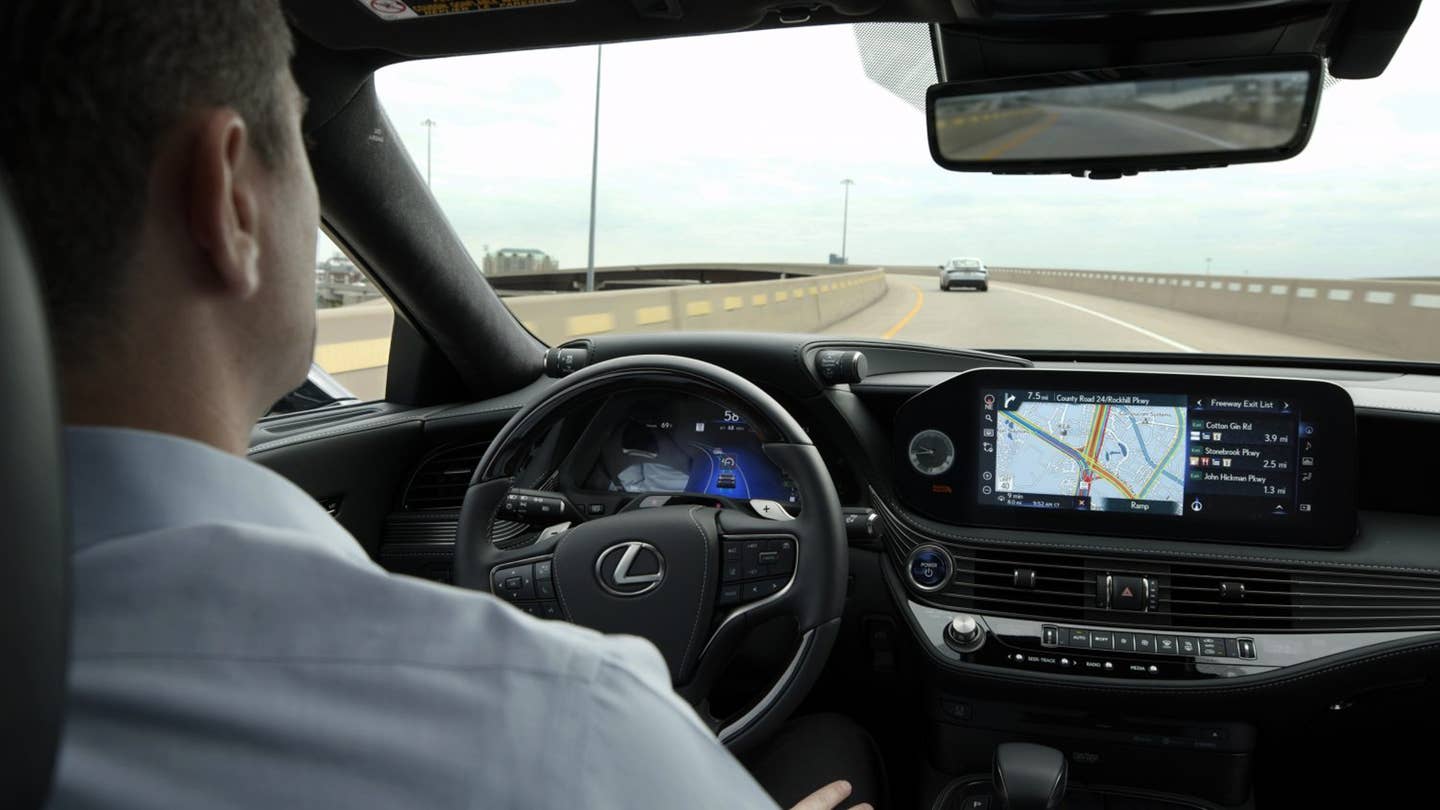The IIHS tested 14 systems and failed most of them, including those from Ford, GM, Mercedes, and—you guessed it—Tesla.

More than a dozen automakers have their own advanced driver assistance systems that help steer, accelerate, and slow the vehicle on certain roads, within certain parameters. Many of those systems feature additional driver monitoring systems to ensure drivers aren’t sleeping or fooling around while ADAS is in use. However, according to the Insurance Institute of Highway Safety, only Lexus‘ driver monitoring works well enough.
The IIHS tested 14 monitoring systems from nine different car companies. Of those, only the Lexus Teammate system—examined on the Lexus LS—earned an Acceptable rating. Two were rated Marginal, while the other 11 got Poor ratings.
“We evaluated partial automation systems from BMW, Ford, General Motors, Genesis, Lexus, Mercedes-Benz, Nissan, Tesla and Volvo,” said IIHS President David Harkey. “Most of them don’t include adequate measures to prevent misuse and keep drivers from losing focus on what’s happening on the road.”
The issues varied between systems. Some failed to recognize when a driver wasn’t watching the road, some weren’t aggressive enough in warning distracted drivers, and some didn’t warn distracted drivers at all. There were even those that let the driver unbuckle their seatbelt with ADAS in action.
When drivers ignore such distraction warnings while using ADAS, the IIHS feels certain emergency procedures are necessary to prevent crashes. For instance, if a driver is unresponsive to warnings for 35 seconds, cars should initiate a slowdown. If that slowdown procedure is ignored even further, the system should alert emergency personnel and prevent the ADAS from being restarted. The idea is that if drivers keep ignoring warnings, they’re either hurt, in distress, or just flat-out misusing the system. However, of all 14 systems, only GM’s Super Cruise had all five of the IIHS’ desired procedures
GM
Drivers should also be more involved with ADAS while in use. For example, the IIHS says that all lane changes should be initiated by the driver, even though Super Cruise and Tesla’s Autopilot will do it on their own. Those same two systems are also the only ones that turn off lane-centering after the driver makes steering inputs or corrections, which the IIHS says can dissuade drivers from making manual inputs so the system doesn’t shut off.
“Some drivers may feel that partial automation makes long drives easier, but there is little evidence it makes driving safer,” said Harkey. “As many high-profile crashes have illustrated, it can introduce new risks when systems lack the appropriate safeguards.”
Lexus’ Teammate system not only has the best name (these systems are exactly that—teammates, not autopilots), it seems to work the best overall. It isn’t the best at everything but it isn’t the worst at anything, either. However, Harkey does provide a silver lining: Since none of these systems are good overall and all have their unique advantages, they can be fixed with simple software updates. Until then, though, Lexus is the only brand that monitors its drivers well enough.
Got tips? Send ’em to tips@thedrive.com


